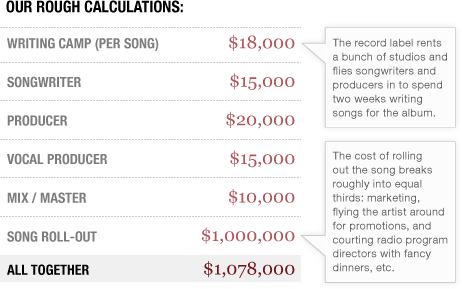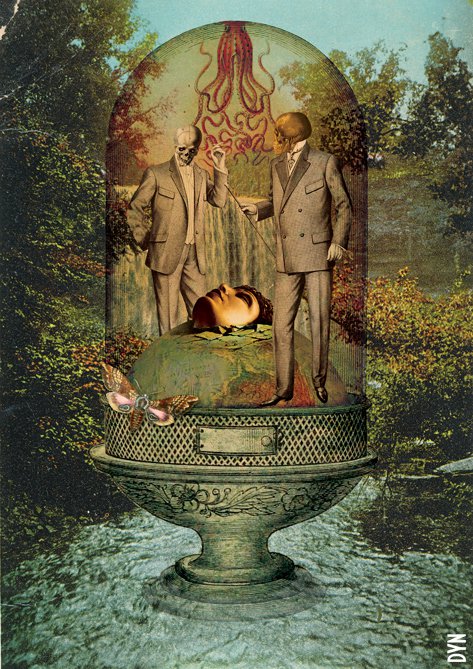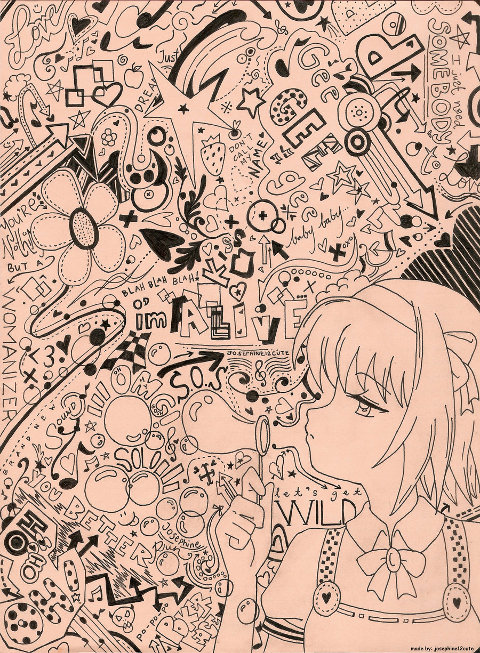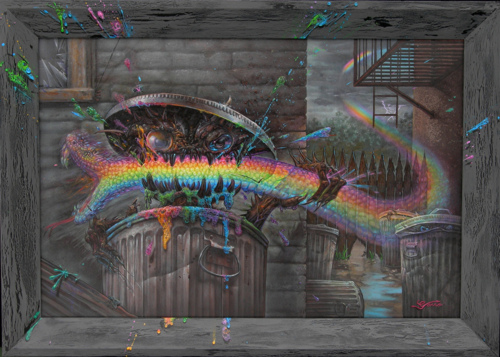art of music by ~josephine12cute
There is a long-standing debate in music criticism about whether pop music should be considered worthy of review, or whether it is a guilty pleasure best left undiscussed in polite company. With limited amount of time to write and listen and limited space to post reviews, these “rocktivists” argued that we should be focusing our reviews on Serious Art. The opposing poptimist camp won, as you’d expect: In a generation where the Internet promised there will always be a surplus of reviewers and space to post their opinions, why not review everything?
The problem with this debate is few people ever bothered to define what pop music is in the first place. It used to be so simple in the days of Nirvana. Pop music was inoffensive and danceable. Rock music was brash and unpolished. But the postmodern era we live in teaches us that labels are elusive bastards that refuse to divide most things in life into tidy binaries. The underground dance movement has shown us that there’s plenty of dance music that is clearly not pop. The success of corporate rock b(r)ands that “did it all for the nookie” will get the same snub treatment from rock critics, even though they aren’t thought of as pop. And even back in the days of Nirvana, what the hell was Bjork? Where did Future Sound of London fit in?
We labeled those acts as “Alternative;” today we call them “Indie.” Even label status can be a misleading marker though. The biggest label in a small country will be perceived as independent in other countries far from where their marketing efforts can reach. This is more and more a factor in a global economy. At the other end, you have indie labels that are swallowed up by major labels. Do the bands on these labels still count as indie when their label is bought? Does it matter if the parent corporation allows the staff to continue running their company exactly as they did before the takeover? Does it matter if the label gets a bigger publicity budget? And then you’re haggling over a dollar amount to define a genre.
Many will agree that we need to stop defining indie as a genre. The same thing needs to happen with pop music.
So What Is Pop Music?
No definition will be perfect, but here’s what I propose. Pop music is music produced by a team of people who collectively are designing a product. That product happens to be art, just as the designers who produce the sheets and lampshades at Target are also producing art. Pop music is first and foremost a money-making venture, and artistic decisions will be guided by marketing factors like target audience and branding. By this definition, Britney will be pop no matter how many giant rock guitars she locks her legs around. Weezer is an example of a rock band that became a pop band when they got rich and started making the songs they thought their teen audience wanted to hear.When you begin to think of Pop music as a product rather than a genre, the rocktivist argument makes a lot more sense. Art critics could write reviews of the output of graphic design firms, but usually they leave that task to Ad Week.
From NPR’s piece on the costs of making a pop single:
Pop music is absurd. It is absurd to pay someone who can sing fifteen grand to write a song and then have someone who isn’t a particularly good singer record that song because her face is the one you want plastered on album covers. It’s absurd that the same system that pays $78,000 to create a single pop song will ask the rock bands they woo to sell their song and soul for a dime. Pop reduces the art of music the way a butcher cuts up a piece of meat. Every aspect of the song is outsourced to different experts who turn in their perfect little cog. All these cogs are reassembled as the clockwork machination we know as the pop star. The empty smile, the calculated cleavage, the vague unreality, the overly clean, slickly produced sound—all of these are symptoms of turning music into an assembly line process.
Conversely, all the rage and hubris the rock critics have flung at the poptivists seems almost silly. The poptivists have done themselves a dis-service by asking critics to take pop music seriously. Pop music is serious business but it is not, cannot be, serious art. Serious art stands for something. Serious art reflects someone’s vision. Because it is a hodgepodge of the cogs, whatever vision the writer began with will be diluted by marketing teams who wish to promote trends or avoid offense. It’s the difference between Jill Sobule singing in favor of kissing a girl and Katy Perry the product who sells the kissed-a-girl brand.
We need to move away from thinking of pop music by the symptoms that describe it—polished, electronic, trite, overly-produced—and think instead of the machine that produces it. We need to stop thinking of pop stars as artists and think of them instead as the logos for carefully tailored marketing campaigns. These surgically perfected smiling dolls are as sad as Frankenstein’s monster, as close to music as hamburger meat is to fillet Mignon. We can take pleasure in what is the fast food of the art world while seeing it for what it is, while going on to chase these monstrous stars with our pitchforks and torches. We love the monster. We hate the monster. We consume the monster. She sells art, but she is not an artist.



